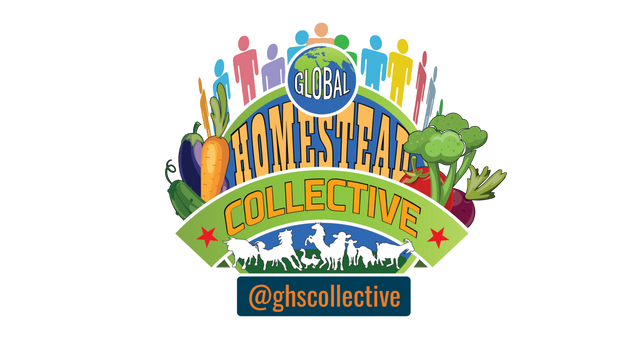Fermented Friday: Ginger Bugs!
One of the reasons behind homesteading for us is the cutting down of stuff; a limiting of trash. Unfortunately – or not - a lot of this garbage comes from food packaging. Not only can we (most probably) all agree that refined foods are bad for you, but they also generate some of the most garbage – plastic bags inside of boxes, wrapped in cellophane? This means that the sleeve of saltines is one of the first things to go, which is not a huge effort for us, but a little tougher than kicking the saltines to the curb is our seltzer habit. Aside from milk, seltzer is the only beverage we buy from the store.
Embarking on a seltzer-less journey, I really wanted to find some sort of substitute for the whole family that could still give us that mouth cleansing effervescence found in a can of seltzer. Of course (mediocre) beer is easy enough to make, but even with a low ABV, it could easily result in trouble, especially if we start giving it to the kids, so that's out. Then there is kombucha, which my daughter will devour, but my son is repulsed by. So I turned my eye toward soda.
Our kids very rarely have soda – mostly at church functions and birthday parties – as it is not exactly what I would call child-friendly or healthy. But as I thought about brewing a batch of soda, I remembered back to college, making a few batches of Birch Beer soda, then I remembered adding sugar. Where as with beer brewing the yeast convert the sugar into alcohol, with soda, the yeast only turn the sugar into carbonation with maybe trace amounts of alcohol – much like kombucha. (They are different strains of yeast and fermentation times and sugar contents are extremely different between soda and beer.) With this concept in mind, it became clear that the amount of sugar added to a brew is more-or-less up to the cook, and has potential to be a low-sugar beverage.
You can make soda a few different ways, most recently it seems that soda making machines are all the rage, but that sort of defeats the purpose of getting rid of stuff and it totally removes the whole “self-reliance” arm of things. You can also just add sugar water or juice to seltzer – again, defeating the less-junk purpose. But believe it or not, there is a way to make soda naturally, with lacto-fermentation. This is the path we decided to take. Where as kombucha needs a SCOBY to grow, soda needs a bug, and once you have a bug, the soda possibilities are only limited by your imagination.
Once you've made a bug – or otherwise obtained a culture – the process is fairly simple: boil some water, add some sugar, add some flavorings, cool, add some bug, bottle. But before you go making a bug or some soda, there are some things to consider:
- <Grolsch style bottles are recommended, though they should be burped during the fermentation process. No one wants a ginger ale cocktail bomb in their pantry.
- For the cocktail bomb reason, you can always reuse older plastic soda bottles. (Plastic bottles do not really create shrapnel. This is what we did for the first few batches before I had an idea of fermentation times.)
- Carbonation is fleeting - sometimes. We have found that once a big two liter bottle is opened and poured from the carbonation dissipates rather rapidly. This is why we use 1-liter or smaller bottles. (Also, Grolsch bottles are smaller, single serving sizes. It also seems that cola-style sodas – higher sugar content sodas - seem to loose their carbonation quicker.)
- Like beer, you can filter your soda and remove some of the flavorings before bottling, or you can leave them for an unfiltered taste and appearance. Once soda has become carbonated, it's very hard to filter the flavorings without going flat, so we remove the flavorings prior to bottling.
Making the Bug

35-45 grams of finely chopped ginger
35-40 grams of white sugar
2 cups of water
Quart Size Mason Jar
Before we make the bug, we process all our ginger in the food processor; after we're done with what we need for the day, we put it back in the fridge in a sealed container until the next day we need it. The naturally occurring yeast that turn apples into cider and grapes into wine are found on the skin, so we include our ginger skin when making a bug, but you don't have to. As for the sugar, you can experiment around with different types, but when it comes down to it, simple white sugar seems to be the best for making a bug. Remember, honey is an antimicrobial, so while you may be able to play around with sweetening individual batches with honey, your bug will have a hard time staying alive feeding just on honey.
On day one add 15 g (or 1 large tablespoon) of ginger to your mason jar. Add an equal amount of sugar, and your two cups of water. Stir it up so the sugar dissolves. Cover it with a coffee filter and rubber band, put it in a warm place and let it rest until tomorrow. (Supposedly, metal kills yeast and should not be used to make breads and other products that contain microorganisms. Growing up, we always used a metal fork to make pizza dough and never had a problem. All the same, we use a wooden spoon now.)
On day two, add 5 g of ginger and an equal amount of sugar. Stir, cover and let rest.
Continue this process for a total of five days – so three more days – or more if you are in a colder climate and your bug does not seem to be generating much activity. You will know your bug is alive when bubbles start amassing on the surface. You also can start smelling faintly floral yeasty activity within the jar and if you're quiet, you can hear the bubbles popping.
Once your bug is formed, you can use it right away to make some naturally fermented soda, or you can wait. There are two options to waiting, you can store your bug on the counter or in the fridge. If you store the bug on the counter, it will remain active and will need to be fed nearly daily 5 g of ginger and an equal amount of sugar. If you store the bug in the fridge, it will still need to be fed, but on a weekly basis. To be honest, I've had a bug in the fridge that I've forgotten about for three weeks, and it survived. Though lately, we've been going through lots of soda so I leave the bug on the counter and keep it nice and bubbly.

Replenishing the Bug
We use ½ cup of ginger bug for each half-gallon batch of soda. So after each batch, we need to replenish the bug. We do this by add half a cup of water, 5 g of ginger and 5 g of sugar. If you do decided to refrigerate your bug, I would leave it out on the counter for a day or two after replenishing to allow the yeast ample time to inoculate the fresh water.
In the days to follow, I hope to upload some of the kids favorite recipes, but for now, here is mine:
Haberno Ginger Ale
3” of ginger chopped coarsley
½ haberno chopped coarsley
¾ cup brown sugar
¼ tsp salt
½ cup ginger bug
2 cups water
Bring water, ginger, haberno, sugar and salt to a boil; turn heat down and simmer for 10-15 minutes. Remove from heat, add some ice to cool. Dump solution into fermenting vessel – we use ½ gallon mason jar. (Make sure your temperature gradient is not too different, hot fluid in cold glass can crack easy.) Add water until 6 cups is obtained. Make sure solution is luke warm (or at least not too hot) and add ½ cup of bug. Cover with coffee filter and rubber band and set in a warm place for 24 hours.
After about 24 hours, check the surface for accumulation of bubbles, (you can listen or look for bubbles, too). Strain and fill your bottles, seal and let ferment another 24 hours. Check bottles for pressure and put in the refrigerator. Enjoy.


Ooh, I may have to try this one!! Ginger ale is a big one for me, I rely on it to keep my digestion happy. And I have to buy real sugar ginger ale, because I'm allergic to corn, so it ain't cheap! I had seen one other recipe where they were recommending putting actual yeast powder in there, and I didn't do it because I never liked the yeast-y tasting ginger ales like Vernor's. But if the ginger skin is enough by itself, that should work! I'm excited to try it! 😃
Right on! Natural yeasts take longer and you have to culture them, but I think the taste is superior.
I can start a fresh bug and get through the soda-brewing process with wonderful results. But I have never managed to keep one alive longer than about twelve days. They always crash and I have to start over. It seems like it shouldn't be any harder than keeping sourdough alive, but it is, at least for me.
The one in my fridge is probably six months old. Could you be overfeeding? Do you store it in the fridge or the counter?
CONGRATULATIONS!!
Your post is featured in my FRIDAY DIY DAY- CURATION - EDITION 17 post!!
ALL PROCEEDS from this post are EQUALLY divided between the three featured authors' posts.
Awesome! Thanks!
I upvoted you and follow you. Plz follow me back and upvote also in my post.
Found your post from Golden D's curation post and what a timely one at that! Thanks @goldendawne, you're a spectacular woman as always. Where you get the energy and all amazes me.
I'm out of kombucha and was planning on brewing another batch. But only the little ones and I are drinking it. I was looking for another fermented fizzy drink I can make so hubby can enjoy it with us and this is just the answer. What a find!
Thanks a lot, I'm bookmarking this :)
Edit: I am interested on other recipe as well. I have no idea what a haberno is so I'll have to look that one up.
Hot pepper. I've not had great luck with fresh fruit. Brew some tea - like kombucha - 1/4 cup of lemon juice, 1/2 tspn salt, and a spring of rosemary. My daughter loves it. Rhubarb also makes a good one - or Japanese knotweed if it grows around you.
Purrrrrr. Yum! Great share! 🐾❤️🐾
Thanks! Love me some real ginger ale.
Ummmhmmmm! 🐾
Purrrrrr. Yum! Great share! 🐾❤️🐾
This is great. Love the impulse to reduce packaging. That's why I started making yogurt actually, to save on all those plastic containers, which some days were the only plastic containers in my fridge. I can make it with a better quality milk than anything I can buy. It doesn't save much on money, but boy did it reduce the plastic in my recycling bin. Now I'm on to making bread to save the plastic involved in that and to have better bread. Good organic bread is so hard to find! Nice to meet you!